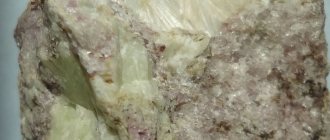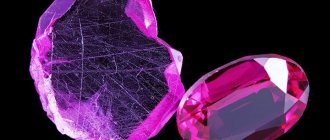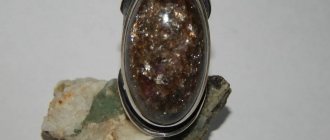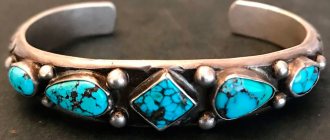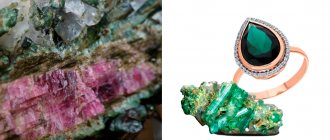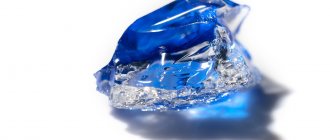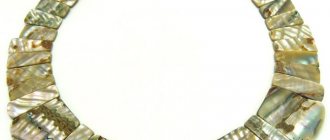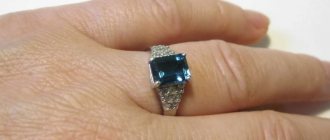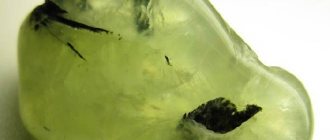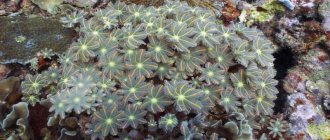What is
Scheelite is a mineral of dense texture and varying degrees of transparency with a glassy or greasy luster. The range of colors is white, yellow from light to cognac, sometimes with a greenish tint, achromatic.
The composition is calcium with tungsten plus admixtures of molybdenum, copper, and cerium.
They create varieties of mineral:
- cuprous scheelite (cuproscheelite) – samples with copper;
- seigirite – with molybdenum.
In the specialized literature, the scheelite stone also appears as tungstein (translated from German as hard stone), scheelpat, trimontite.
Form of being in nature
The appearance of crystals . Octahedral with predominant faces (011) or (112); sometimes tabular on {001). (001) usually uneven; {112} is often covered with diagonal shading, usually parallel to the [311] edge, that is, the intersection with {121}. Also dense, grainy; columnar.absent.
Doubles. Common on {110}; germination twins are more common than accretion twins. The fusion plane is usually (110);
Aggregates. Dense, grainy.
Story
The stone entered the history of science thanks to two scientists:
- The Swedish chemist Karl Wilhelm Scheele was the first (1781) to determine that this component of the local ore is a tungstic acid compound.
- The German mineralogist Karl Leongardt described it in his book forty years after its discovery.
He also suggested naming the mineral in honor of its discoverer.
Sheelit on the map
On the map of the Sverdlovsk region of Russia there is a point called “Sheelit”:
- This is a village founded in the first third of the twentieth century on a deposit of bismuth-tungsten-molybdenum ores.
- At first, geologists worked and lived here, then a processing plant was built.
- With the beginning of the Great Patriotic War, tungsten-saturated ore became a strategic raw material.
- By the late 1940s, the reserves had been selected.
- Since the mid-twentieth century, an expedition of geophysicists has been based in the village.
Since 1996, the village has been included in the city of Zarechny.
You can get from Sheelit to Zarechny on foot in about forty minutes.
Place of Birth
In wolframite-cassiterite veins in Zinnwald, Altepberg and Schwarzenberg in Saxony; also in Neudorf and Harzgerode in the Harz and in Thirpersdorf, Vogtland. Also found in tin veins in Zinnwald and Schlaggenwald in the Czech Republic. In veins with calcite and epidote in gneisses in Unter-Sulzbachtal and here and there in the Austrian Alps. Finds have been made in Alpine-type veins in Haslital and in some places in the Swiss Alps. In Italy found with tourmaline, fluorite and chalcopyrite in veins in the diorites of Predazzo in Tyrol; at Traversella, Piedmont, often in good crystals, and at Guerrei, Sardinia. In France mainly at Meymac, Corrèze, partly altered to Tungstite, and at Framont in the Vosges, Alsace. Scheelite is a common, although minor, mineral of cassiterite veins in Cornwall, England; also found with wolframite at Carrock Fells, Cumberland. In Uzbekistan, scheelite was found in contact-metamorphic deposits in the Nurata Mountains. In Russia, sheelite is mined in Kuznetsk Alatau, Khakassia and Boevka in the Urals. Deposits of scheelite are found in Burma and the Malay Peninsula, mainly in Kinta, where it occurs with fluorite in the contact zone. It is also found in various places in Japan and as a minor mineral together with wolframite in the wolframite region of Southern China. With stibnite at Hillgrove, New South Wales and the Ramsay Mountains, Tasmania. With wolframite and cassiterite, scheelite is found in small quantities in sulfide-rich veins in northern Bolivia. Important deposits occur in northeastern Brazil. In the US, scheelite is found in industrial quantities in many western states. One of the largest industrial deposits is located near Mill City, in the Humboldt Mountains, Nevada, where scheelite occurs in contact metamorphic rocks. Mined also in numerous other places in Nevada, chiefly at Silver Dyke, near Main, with albite and minor sulphides in the veins filling the fractures; in Orean with beryl, oligoclase, phlogopite and fluorite in pegmatites; in the Paradise mountain range; in Arizona with wolframite in vein formations at the Boriana Mine, Hualpai Mountains, Mojave County, and in veins in the Huachuca Mountains, Little Dragon Mountains, Cochise County, contact deposits in the G'elvetia area and elsewhere in Pima County; in New Mexico in small quantities in Hidalgo County and elsewhere. Important deposits of scheelite are found in California, principally near Bishop, Inyo County, in epithermal veins at Atolia, San Bernardino County, and at Randsburg, Kern County. Found in Idaho at Yellow Pine and Coeur d'Alene, Shoshone County; in Utah in the Cottonwood American Fork region and in the Mineral Range, Beaver County; in Connecticut at Long Hill, Trumbull, and at the Lane Mine, west of Monroe. In Canada, found in the Bridge River area, British Columbia, with stibnite and ferruginous dolomite in low-temperature veins in the serpentine and in the Caribou and Nelson areas, British Columbia. Also in quartz veins in Halifax Parish, Nova Scotia, and in Marlow Parish, Frontenac Parish, Quebec.
Physico-chemical parameters
To a chemist, scheelite stone is a calcium tungsten oxide with a standard formula (CaWO4). The basic components - calcium and tungsten - are presented in a ratio of 1:4.
A cube of scheelite with an edge of 1 cm weighs six grams.
| Formula | CaWO4 |
| Impurity | , , |
| Physical properties | |
| Color | Colorless, white, pale yellow, brownish yellow, reddish yellow |
| Stroke color | White |
| Shine | Glass, bold |
| Transparency | Transparent, translucent |
| Hardness | 4—5 |
| Cleavage | Pretty perfect |
| Kink | Uneven, conchoidal; fragile |
| Density | 5.9—6.12 g/cm³ |
| Crystallographic properties | |
| singonia | Tetragonal |
| Optical properties | |
| Refractive index | 1,918—1,937 |
Notes[edit]
- ^ a b c d https://rruff.geo.arizona.edu/doclib/hom/scheelite.pdf Handbook of Mineralogy
- ^ a b https://www.mindat.org/min-3560.html Mindat.org
- https://webmineral.com/data/Scheelite.shtml Web Mineral Data
- Jump up
↑ Klein, Cornelis and Cornelius S. Hurlbut,
Manual of Mineralogy
, Wiley, 20 ed., 1985, p. 356 ISBN 0-471-80580-7. - Zalkin, A.; Templeton, D.H. (1964). "X-ray diffraction refinement of the structure of calcium tungstate" (PDF). Journal of Chemical Physics
.
40
(2):501–504. Bibcode: 1964JChPh..40..501Z. DOI: 10.1063/1.1725143. - ↑
Lindgren, W. (1933)
Ore deposits of the Western States,
pp. 518, 535. - Jump up
↑ Chisholm, Hugh, ed.
(1911). "Sheelit". Encyclopedia Britannica
(11th ed.). Cambridge University Press. - Amstutz, Gerhard Christian et al. (Eds.). Ore genesis: current state.
Vol. 2 . Springer Science & Business Media, 2012, p. 418. - Reynolds, Francis J., ed. (1921). "Sheelit". Collier's New Encyclopedia
. New York: P. F. Collier & Son Company. - Gleason, Kayla (2019-12-07). "English Dub Review: Dr. STONE" Spartan Crafts Club "". Bubbleblabber
. Source 2021-01-26.
Where and how is it mined?
Deposits of scheelite as ore are scattered chaotically across the planet:
- Brazil, the Far East, and the Japanese archipelago are the source of 35-centimeter samples.
- Jewelry raw materials are supplied by Sri Lanka, Namibia, Russia (Ural), Britain, and Tajikistan.
- Industrial production is carried out in Austria, Germany, the Czech Republic, and Canada.
Russian deposits are being developed in Chukotka, Kabardino-Balkaria, Chelyabinsk, and Sverdlovsk regions.
Extraction is carried out using the shaft method.
Jewelry with mineral
As mentioned above, scheelite is a fairly fragile stone; it practically does not tolerate cutting, even the most accurate, and the most beautiful specimens are sold to collectors. Therefore, artificial stone is used in the jewelry industry - in appearance they are in no way inferior to the original, but they are strong and easy to process.
Also read: Opal – a stone of talent and charisma
Artificial scheelite has been produced for several decades. And if the first stones were colorless, now they have learned to make crystals of all the necessary natural colors, which makes them practically indistinguishable from natural ones.
Faceted stone
Reference! With rare exceptions, the strongest and highest quality samples are used in jewelry. Sometimes stones suitable for cutting are found in deposits in Tajikistan, Sri Lanka and Namibia.
Receiving technology
The purpose of processing scheelite ore is to obtain pure tungsten. Along the way - molybdenum and other rare earth elements.
The process is multi-stage:
- The enriched ore is loaded into the furnace.
- Hydrogen is added and heated to 710°C. Tungsten trioxide is obtained.
- The compound is reduced to metal powder.
The refractoriness of tungsten led to the use of the powder metallurgy method:
- The furnace is filled with hydrogen and heated to 1250°C.
- The loaded powder is pressed and sintered.
- An electric current is passed through the array to raise the temperature.
- Material heated to 3000°C becomes monolithic.
Purification and production of single crystals is ensured by zone melting.
There is a simple way to obtain tungsten from scheelite at home. The mineral is poured with hydrochloric or nitric acid. The stone will dissolve, and the bottom of the container will be covered with a yellowish sediment. This will be tungsten.
Synthetics [edit]
Although it is now rarely used as a diamond imitation (much more compelling products such as cubic zirconia and moissanite have long since supplanted it), synthetic scheelite is sometimes offered as natural scheelite, and collectors can be duped into paying high prices for them. Gemologists distinguish natural scheelite from synthetic material mainly by microscopic examination: natural material is very rarely without signs of internal growth and inclusions (defects), while synthetic material is usually very pure. Distinct artificially curved grooves and clouds of tiny gas bubbles can also be observed in synthetic scheelite.
The visible absorption spectrum of scheelite, as seen with a hand-held (direct) spectroscope, can also be useful: most natural stones exhibit a number of weak absorption lines in the yellow region of the spectrum (~585 nm) due to trace amounts of praseodymium and neodymium. In contrast, synthetic scheelite often does not have such a spectrum. However, some synthetic materials can be doped with neodymium or other rare earth elements, but the resulting spectrum is not similar to that of natural stones. [ citation needed
]
Where is it used?
Sheelite stone has found application depending on the conditions.
Industry
Scheelite ore is the main source of refractory tungsten:
- The filament in household light bulbs is made from it.
- This is the basic component of alloys for the defense, aviation, and space assortments (nose segment of missiles, electric valves, X-ray, radio equipment).
- Crystals are used in lasers.
Along the way, molybdenum and “rare earths” are extracted from the ore.
Other areas
Transparent or translucent pure crystals are sorted by jewelers:
- Transparent samples are indistinguishable from cognac or golden diamonds.
Jewelers use Sheelite stone as an affordable substitute for diamonds.
- The frame is silver, white or yellow gold.
- Application is limited by the properties of the gem: low hardness (4-5 according to Mohs) and fragility. Therefore, necklaces, pendants, earrings, and brooches are often made from it.
Unusual specimens of scheelite replenish the collections of mineral collectors.
Areas of application
Scheelite ores are a valuable source for the extraction of tungsten, widely used in the industrial production of various products. In jewelry, natural stone is used extremely rarely due to its fragility, and more or less decent examples quickly disappear into private collections.
In industry
Scheelite is a source of not only tungsten, but also molybdenum and some other rare earth materials. Due to its chemical composition and resistance to high temperatures, the mineral is widely used in industry:
- in dyeing;
- in aerospace – production of rocket nose parts;
- in the production of light bulbs;
- in the machine tool industry and defense industry – production of strong steel alloys;
- production of X-ray and radio equipment, electric valves.
Artificial scheelitis
The rarity and beauty of the stone “forced” people to learn how to grow it.
Sheelites obtained in laboratories are free from the disadvantages of natural stone:
- Fragility due to the structure of the crystal lattice.
- Pollution.
- Small dimensions.
And the processing complexity they generate.
This material has many advantages:
- Durable.
- Does not fade in the sun.
- Easy to process.
- You can grow a crystal of any size and color.
- Much cheaper than natural.
The first “plantations” of gems were established by the middle of the 20th century. The Czochralski method was used. We started with achromatic samples, then learned to add color.
The most popular are jewelry stone inserts of 20-25 carats in cognac or golden-sunny shades.
How to identify
Scheelite as a mineral does not belong to the jewelry “elite”. However, it is rare and beautiful, which stimulates the creation of imitations.
Sheelit from Uzbekistan
Glass or artificial crystals are offered under the guise of natural stone.
You can recognize the imitation:
- Under ultraviolet light and x-rays, the scheelite stone glows bluish or yellowish. Unlike glass or artificial sample.
- The glass contains bubbles inside, is lightweight, and heats up quickly in your hands.
It is easier to identify the unprocessed material: the crystals are recognized as pyramids fastened to each other, and scheelite aggregates have a greasy, intense shine.
The “signature” property of scheelite is bluish-white or yellowish luminescence.
How to distinguish from a fake
In order to distinguish natural stone from artificial one, it is necessary to know some of its physicochemical properties.
For example, scheelite is susceptible to ultraviolet light - when irradiated with it, the mineral begins to glow and changes color to blue or yellow, depending on the concentration of molybdenum in it. Artificial stone will not react in any way to ultraviolet radiation. X-rays have the same effect on stone.
If you boil scheelite with tin, the stone will turn a bright blue color.
But it is quite difficult to melt a natural mineral, and it completely dissolves in hydrochloric or nitric acids.
Reference! It is easy for inexperienced geologists or ordinary people without special knowledge to confuse scheelite with diamond.
How to wear and care
You will have to thoroughly care for the fragile stone:
- Select a separate box with velvet inside.
- Avoid falls, impacts, and mechanical impact.
- Limit the stone's exposure to direct sun. Do not wear jewelry to the sauna, gym, or the beach.
- Remove dirt with a soft cloth moistened with soapy water. The use of aggressive chemicals is excluded: nitric, hydrochloric and other acids will dissolve the stone.
This will help maintain the integrity and shine of the scheelite.
Magic properties
Sorcerers consider the sheelite stone to be an attribute of the subtle spheres:
- A person strives to comprehend his life, to remove the “husk” from it.
- “Dormant” reserves and creative potential are activated.
- The ability to control oneself during protracted conflicts improves.
- Increased concentration.
The magical properties of scheelite also help in practical matters:
- A person begins to understand his goals and work to achieve them.
- Finances come under close control. The owner of the stone becomes a conscious consumer of goods.
The magical and healing properties of scheelite are reinforced by a silver frame.
Yoga adherents claim that the stone is associated with the parietal, eyebrow, and throat chakras.
Origin and location
Scheelite is widespread in nature and is often an important tungsten ore. Like wolframite, with which it is often co-occurring, scheelite is a typical high-temperature mineral.
The main types of deposits include:
1) Contact-metamorphic deposits formed in limestones in contact with granite intrusions. Commonly found are garnet, diopside, tremolite, hornblende, epidote, wollastonite, vesuvianite, sphene, axinite, molybdenite, fluorite, with a small amount of sulfides, mainly pyrite and chalcopyrite, and less commonly wolframite. Contact metamorphic rocks are usually classified as tactites. The main industrial deposits belong to this type.
2) High-temperature, quartz-rich hydrothermal veins and greisens, usually directly associated with granite intrusions and containing significant quantities of wolframite and cassiterite. Other minerals co-present with scheelite are tourmaline, apatite, topaz, fluorite, mica, albite, arsenopyrite, pyrite, pyrrhotite, molybdenite, chalcopyrite, native bismuth and bismuthite. Scheelite is found in a subordinate amount and is formed later than wolframite, and is often only an accessory mineral.
3) In pegmatites, often only as an accessory mineral, but sometimes in quite significant quantities (Oreana, Nevada).
4) In relatively small quantities in hydrothermal veins formed at medium and low temperatures (Leadville, Colorado; Bolivia; Atolia, California).
Therapeutic effect
Since ancient times, the stone has been used as a water purifier. To do this, the silver product with it was immersed in water overnight. In the morning they drank or washed their face.
Today, lithotherapists have added to the list of medicinal properties of the stone:
- Getting rid of chronic sleep disorders and frightening dreams.
- Zeroing out alcohol and drug addiction.
- Cleansing the blood and liver.
- “Drying out” swelling of the hands and feet.
- Protection against infections, malaria.
In order for the Sheelite stone to work like a doctor, it must be worn without taking it off for a longer period of time.
Contemplating the gem from different angles calms the nerves and helps balance emotions.
Sheelite according to the Zodiac
According to the Zodiac, sheelite is a stone of Leo, Taurus, Gemini, Libra, Aquarius. It won’t harm representatives of other signs; it’s more of a beautiful thing.
As a talisman it is suitable for people of creative professions, as a talisman - for spouses and mentally vulnerable people.
Compatibility with zodiac signs
(“+++” – the stone fits perfectly, “+” – can be worn, “-” – is strictly contraindicated):
| Zodiac sign | Compatibility |
| Aries | + |
| Taurus | +++ |
| Twins | +++ |
| Cancer | + |
| a lion | +++ |
| Virgo | + |
| Scales | +++ |
| Scorpion | + |
| Sagittarius | + |
| Capricorn | + |
| Aquarius | +++ |
| Fish | + |
In astrological terms, sheelite is a universal stone. It has a positive effect on all signs of the Zodiac, but its energy is felt especially strongly by Gemini, Taurus, Libra, Leo and Aquarius.
Is this stone right for you?
